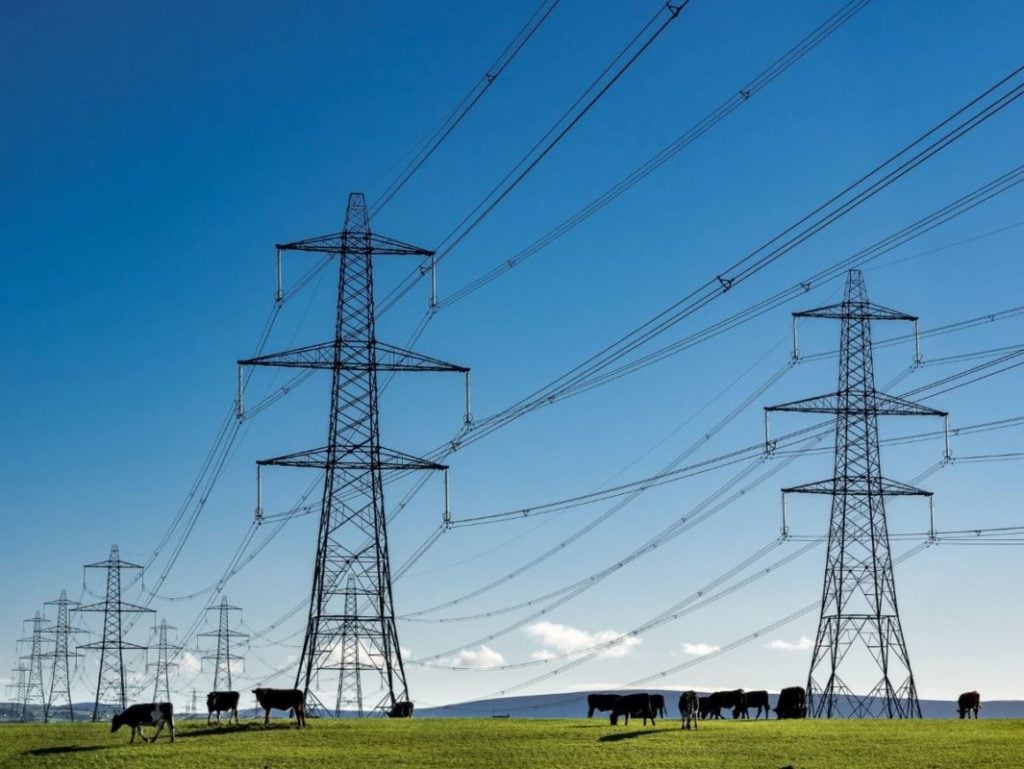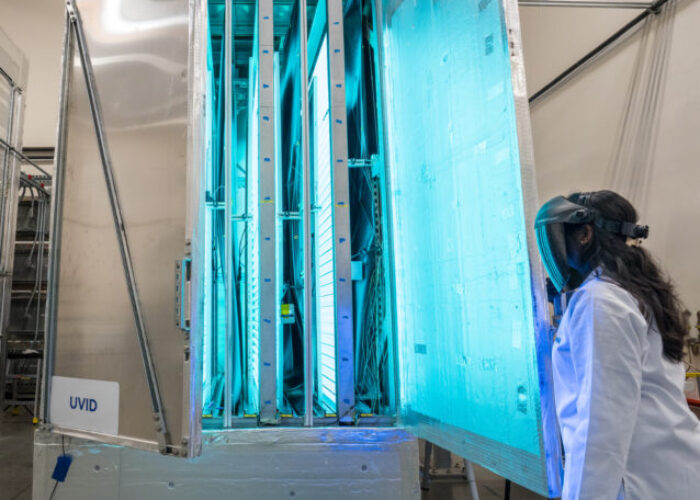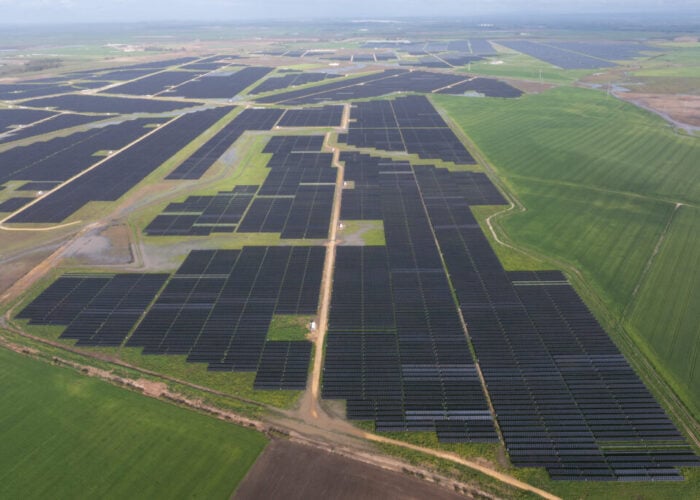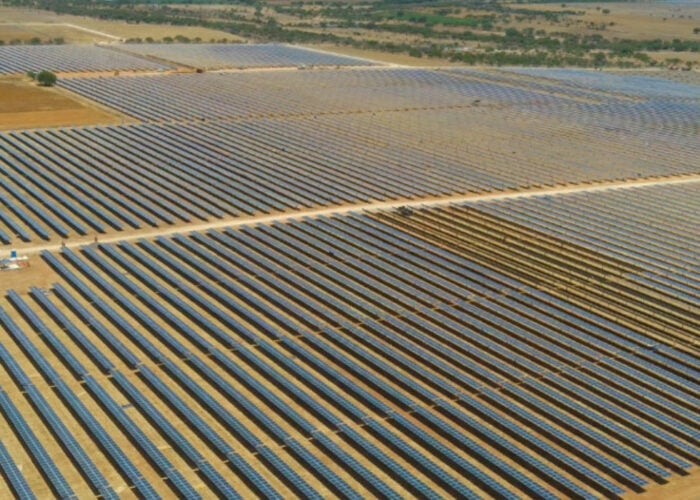
“It’s obvious that a more distributed system, especially coupled with lots of storage, is lots more resilient,” Dr Pawel Czyzak, Europe programme director at clean energy think tank Ember, told PV Tech Premium yesterday.
His comments highlight how more widespread adoption of solar and storage technologies across the continent can help mitigate Europe’s grid vulnerabilities.
Try Premium for just $1
- Full premium access for the first month at only $1
- Converts to an annual rate after 30 days unless cancelled
- Cancel anytime during the trial period
Premium Benefits
- Expert industry analysis and interviews
- Digital access to PV Tech Power journal
- Exclusive event discounts
Or get the full Premium subscription right away
Or continue reading this article for free
Czyzak is the lead author of Ember’s latest report, ‘New lines of defence: how interconnectors keep the lights on’, published today, which assesses the vulnerabilities of Europe’s power grids.
The report notes that interconnections are a vital component to Europe’s energy security, enabling countries to reinforce their domestic electricity generation with foreign imports in times of crisis, but estimates that 55% of the continent’s power systems have “limited electricity import options”, placing them in vulnerable positions.
The graph below, from the Ember report, compares the number of import directions, and the potential for energy imports, for a number of European countries; countries closer to the bottom-left of the graph have fewer import options, and can import less electricity from neighbouring countries, placing them in more vulnerable positions. The most vulnerable countries, highlighted in red, are Ireland, Finland and Spain.
The report points to increased geopolitical tension in northern and eastern Europe, in particular, as examples of the way sin which energy infrastructure can be disrupted. Using the example of Russia’s invasion of Ukraine, the report notes that by May 2024, around 70% of Ukraine’s domestic thermal generation capacity was occupied or damaged, leaving the country reliant on 2.4GW of import capacity from neighbouring countries that could meet around 20% of Ukraine’s peak energy demand.
Similarly, Estonia, Latvia and Lithuania shifting from a connection with Russia’s energy grid to Europe’s in February has provided greater energy security for all three countries, with the Ember report noting that the Connecting Europe Facility invested €1.2 billion (US$1.41 billion) into the de-coupling programme, and the building of new cross-border interconnections.
However, with nine incidents of infrastructure damage reported in the Baltic Sea since 2022, these interconnections are a priority target, particularly for those in Russia, who seek to replicate what was done to the Ukrainian energy system.
Conflict exposes longstanding grid issues
Yesterday Czyzak told PV Tech Premium that these disruptions are not themselves existential challenges to the grids of Europe, but rather exacerbations of existing and long-standing structural weaknesses with Europe’s grids.
“The grid is perhaps designed with a very centralised system in mind, and the type of system where you have a limited number of centralised big power plant – that are also now getting old – is very prone to disruption,” said Czyzak. “If you imagine one of these power plants going down, the whole grid suffers; if you have a more decentralised system, especially if you have more solar and storage distributed across the whole country, then it’s much more difficult to disrupt the whole grid.
“The grid is vulnerable, I think, mainly because it’s quite old and it’s not keeping up with the very big momentum and the speed of the energy transition that we’re seeing now,” he continued, suggesting that there is a technical element to the outdated nature of Europe’s grids, too.
“This transition is moving, perhaps, faster than anyone anticipated, so we’re seeing these huge growths in solar energy and wind energy, and other technologies [like] storage, but the planning cycle and the development cycle for grids is very slow. It really isn’t keeping up with the speed of the energy transition.”
Solar and storage delivering ‘quick wins’
When asked about ways to deliver grid security in the long-term, Czyzak echoes the report in calling for more interconnection capacity across Europe. However, considering the length of time he said is often required to build new grid infrastructure, he said that solar and storage systems, in particular, can be deployed far more quickly, delivering “quick-win solutions” for countries with more vulnerable grids.
“You have these quick-win solutions – low-hanging fruit, you could also say – like high-demand flexibility, storage, digitalisation and software, data management and AI,” said Czyzak. “All of that has much lower investment costs, and you can deploy it pretty much straight away, so we should definitely use that as much as we can to, at least, mitigate these immediate issues.
“For example, for congestion issues, we can’t wait five years for the grid to develop if we can’t connect any more solar farms to the grid in the Netherlands, or any data centres in Ireland. Those things need to be tackled straight away.”

This idea is reinforced by the rapid growth of new solar and storage projects in Europe, with SolarPower Europe noting that Europe added a record 65.1GW of new solar capacity in 2024. While this year is on pace for a slightly lower figure – 64.2GW of new capacity additions, the first time in over a decade that year-on-year solar capacity additions have fallen – the trade association explained that “years of solar boom” will drive Europe to over 400GW of cumulative installed capacity by the end of 2025.
The same is true for the storage sector, with Europe adding 11.9GW of new storage capacity, across all scales and technologies, in 2024, bringing cumulative installations to 89GW. Figures from the European Association for Storage of Energy (EASE) and research consultancy LCP Delta show that 2024 was a record year for capacity installations, with a 35% year-on-year increase in capacity additions, as storage provides exactly the kind of grid-forming services that would be needed in countries with more vulnerable grids.
“That’s something that most of Europe already knows and is already pursuing; you can make the system more decentralised through distributed generation, and then you have this robustness built in,” added Czyzak, highlighting the attractiveness of solar and storage from an energy security angle.
Time and money remain obstacles for long-term reform
“Then there’s the portfolio of solutions that’s more related to the grid and infrastructure,” Czyzak continued, pointing to more long-term adjustments that can be made to the fundamental structure of Europe’s grid systems. “That’s interconnections and modernisation of national grids, and having as much interconnection as possible, to move the power around and push power to places where it’s needed the most, or where it’s lacking.
However, he noted that these kinds of investments require considerable time and money. Figures from the International Energy Agency (IEA) estimate that Europe’s annual grid spending will exceed US$70 billion by the end of this year, yet the world invests less than half of the US$1 trillion that is invested into electricity generation each year.
In June, the European investment Bank announced plans to increase its financing to a record €100 billion for a number of areas, including grid infrastructure, but Czyzak argued that time may be the greater obstacle than money, considering the sheer scale of grid upgrades forecast to match growing renewable electricity generation additions.
“Why we talk quite a lot about interconnections and grids is that they take a long time to build; the later you start, the more time it takes,” he said. “We are already seeing grids be quite congested in quite a lot of places and you can manage that to some extent by storage and flexibility solutions, but at the end of the day you need those lines to expand, especially if you’re connecting big generators like offshore wind farms, energy hubs or data centres.
“You need these grid investments and these interconnectors to manage some of the geopolitical risks as well, and that can take ten years [so] the earlier we start, the better.
However, asked about these obstacles, and the fact that overhauling a continent’s grid system could be so complex as to dissuade grid operators from even attempting to solve these problems, he said that Europe is, on the whole, in agreement that grids simply cannot be allowed to continue to function as they have in the past.
“I think we’re already past that point in quite a lot of European countries,” he said. “What I mean by that is that solar capacity is so vast that it’s not going to disappear; it’s already led to quite a lot of countries having maybe half of their electricity mix provided by renewables and clean power. There was definitely a lot of this opposition maybe five years ago, but I think maybe it’s more now the case that we all agree that the trend is that we will have a lot of solar, so we will need a lot of storage to balance that.”
“It’s still cheaper than importing gas from the likes of Russia, Qatar or the US, which [also] comes with a huge geopolitical risk, so I would say that there is no consensus, but there is maybe acceptance that we have a pathway that is mostly wind- and solar-based, plus some nuclear in some countries and some gas for balancing in some places.”






